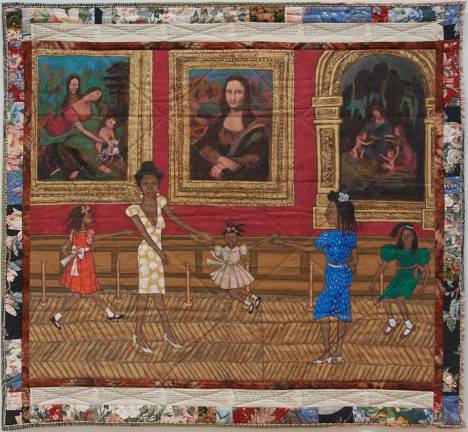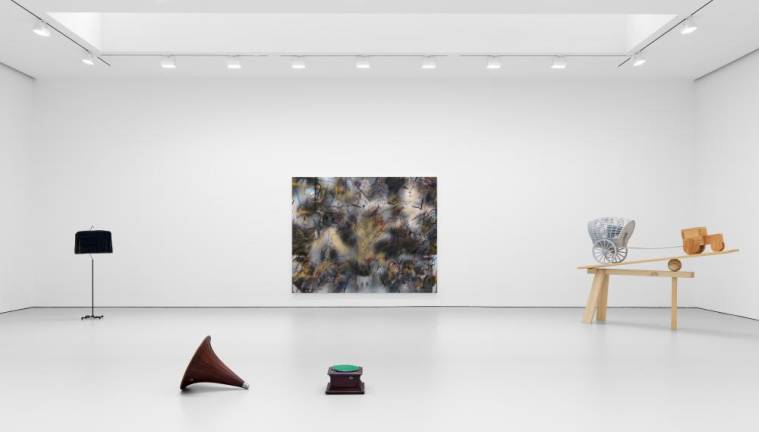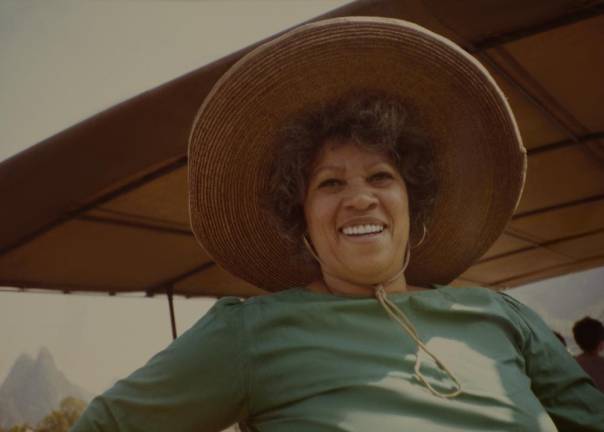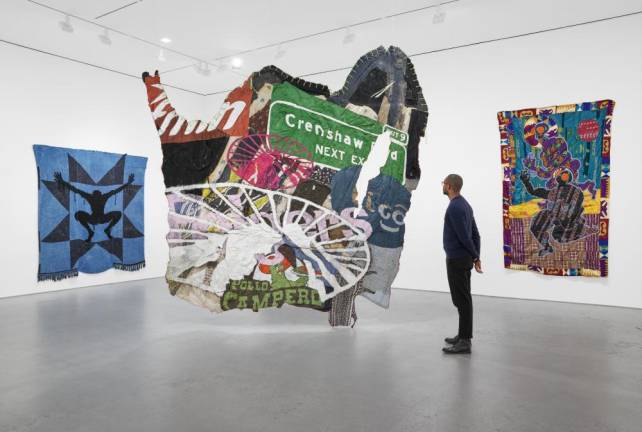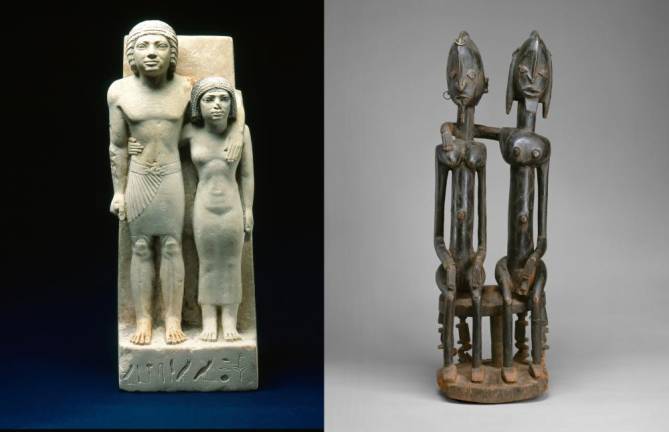February is a great time to be inspired and enriched by Black artists of the past and present, and New York’s museums and galleries have extraordinary exhibitions on hand. Here are some highlights for Black History Month.
“Faith Ringgold: American People”
February 17- June 5, The New Museum, 235 Bowery, New York
“I just decided when someone says you can’t do something, do more of it,” Faith Ringgold once said. Thankfully, what this national treasure wanted to do was create art. At age 91, Ringgold is getting her first major museum retrospective at the New Museum. Her work is lyrical, uplifting, searingly honest, political, personal and deeply moving. Look for paintings, sculptures, text-based images, story quilts, banners fashioned after Tibetan thangkas and more, that cover six decades of creative output.
From the civil rights movement of the 1960s, to feminist protests in the ‘70s and today’s Black Lives Matter movement, Ringgold’s work has challenged political situations, racial injustices, gender hierarchies and assumptions about art versus craft, all with intelligence, bravery and heart. Growing up in the midst of the Harlem Renaissance; having to study art education, because fine art courses were only offered to men; finding success as an artist; and giving back through supporting other women and artists of color all find expression in Ringgold’s powerful work.
Toni Morrison’s Black Book Curated by Hilton Als
Through February 26, David Zwirner, 525 and 533 West 19th Street, New York
So many artists, writers, and readers have been affected by the work of Nobel Prize winning author Toni Morrison, that to pinpoint or describe her influence would be nearly impossible. Still, some of the most prominent American artists offer their talents and vision to try. Garrett Bradley, Beverly Buchanan, Robert Gober, Gwendolyn Knight, Kerry James Marshall, Julie Mehretu, Martin Puryear, Amy Sillman, Bob Thompson and James Van Der Zee, among others, are represented with works that respond to Morrison’s writing.
Look for paintings and sculptures, photographs, documents, and pieces of texts gathered by curator, critic and author, Hilton Als, to create a multidimensional portrait of a deeply significant writer. Along with the exhibition, David Zwirner presents “Dialogues: The David Zwirner Podcast,” which continues the conversation with a talk with Als and activist author Angela Davis, discussing their friendship with Morrison and the impact of her work. pod.link/dialogues
“The New Bend”
Through April 2, Hauser & Wirth, 542 West 22nd St., New York
Only recently has there been recognition of the extraordinary sophistication, creativity, ingenuity and improvisation woven into American quilts made by a group of Black women. As Paris was in the 1920s and Greenwich Village was in the 1950s, Gee’s Bend, Alabama has been and continues to be a hotbed of artistic experimentation, through fiber art.
Complex, abstract patterns joined with traditional skills to create important works by, until recently, unknown artists. They’re beginning to be known and shown in major museums and galleries, and their creations have inspired others. In “The New Bend,” curated by Legacy Russell, 12 artists respond, “in tender dialogue with, and in homage to, the contributions of the Gee’s Bend Alabama quilters.” Some of the artists use thread and needle, others use collage, text or found materials, but all express respect and harmony, and the same time carve new, personal paths based on their own experiences and concerns.
“The African Origin of Civilization”
Ongoing, Metropolitan Museum of Art, 1000 Fifth Avenue, New York
For an intriguing way to reconsider Black history and creativity, head to the Met’s recently installed, ongoing exhibition that pairs works of Egyptian art with art from the rest of the African continent. There have been many studies linking Egyptian culture with other ancient civilizations, like Greece, Rome and others along early trade routes. But this exhibition takes a look at the connections between culture that developed around the Nile and those in sub-Saharan Africa, pairing distinct works and inviting us to look at them with fresh eyes.
Influences, relationships and the exchange of ideas across time and regions come into focus through common materials, motifs, and meanings. A timeline highlighting about 80 major cultural moments in African history surrounds the exhibition. Looking to broaden the dialogue even more, curators have installed works from sub-Saharan Africa throughout the museum, creating surprising juxtapositions in galleries of Ancient Near Eastern Art, Greek and Roman Art, Medieval Art, and European Painting.
